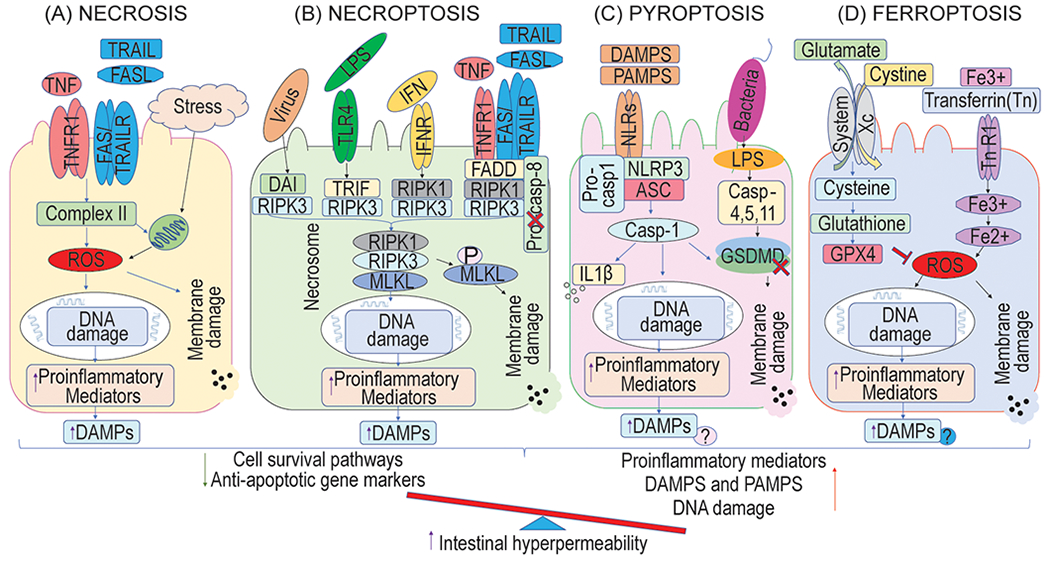Fig. 2.

Lytic cell death pathways of intestinal epithelial cells (IECs) during the intestinal diseases. A: The inadequate release of TNF-α not only mediates IECs apoptosis, but also triggers necrotic cell death by inducing ROS, which acts as secondary messengers to regulate inflammation and its mediated signaling pathways during the presence of multiple pathological stimuli and stress condition. B: The binding of death ligands with their corresponding receptors (as shown in the figure) together with adapter proteins, but under caspase-8 or cIAP depletion, promotes the cell death pathways of necroptosis through the formation of necrosome RIPK1/RIPK3/MLKL, which leads to the phosphorylation of MLKL (p-MLKL). This event reduces the cell survival and anti-apoptotic pathways and increases the pro-inflammatory mediators along with intestinal barrier dysfunction and intestine permeability. C: Sensing of DAMPs or PAMPs by NLRs promotes the formation of inflammasome complex that involves NLRP3, ASC, and caspase-1 in the canonical pathway. In the non-canonical pathway, LPS leads to the activation of caspase-11 and results in cytoplasmic swelling and cytosolic content leakage along with DAMPs. Although pyroptosis occurs in inflammatory cells, it seems that pyroptosis in IECs plays an important role in the pathogenesis of chronic intestinal diseases, but several scientific pieces of evidences are needed to fill this gap. D: The increase in iron-dependent lipid peroxidation and lipid ROS accumulation and decrease in GPX4 activation through system Xc− inhibition lead to the destruction of IECs and intestinal hyperpermeability. However, the evidence for supporting ferroptosis in IECs is very less. DAMPS, Damage-associated molecular patterns; PAMPs, Pathogen-associated molecular pattern molecules; DAI, DNA-dependent activator of IFN-regulatory factors; MLKL, Mixed lineage kinase domain-like pseudokinase; NLRs, Nucleotide-binding oligomerization domain-like receptors; ASC, an apoptosis-associated speck-like protein containing a CARD domain; NLRP3, Nucleotide-binding oligomerization domain-, leucine-rich repeat-, and pyrin domain-containing protein 3; GPX4, glutathione peroxidase 4; LPS, lipo-polysaccharides; TLR4, Toll-like receptor 4; IL-1β, interleukin-1β; ROS, reactive oxygen species; GSDMD, gasdermin-D.
